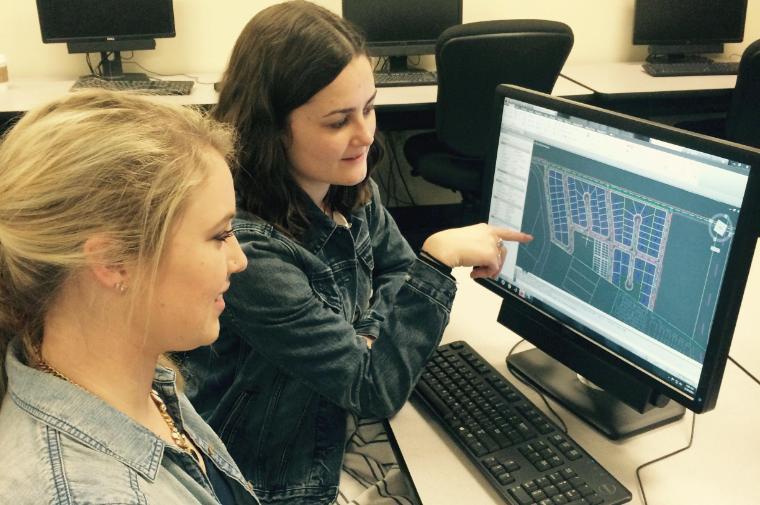
Making Connections
Sometimes, it's all about connections. For civil engineering seniors Ellen McKay and Kaelynn Willey, connections to faculty advisors, a fellow Bronco engineer, a local developer, and yes, even sewer lines, became paramount as they set out to plan and design a low environmental impact neighborhood district.
Their first important connections came when they selected associate professors Steven Chiesa and Rachel He as their project advisors. Chiesa, who specializes in wastewater management, and He, whose expertise is in transportation modeling, put them in touch with alumnus Chris Freitas '84, senior civil engineer for Santa Clara County, for help in finding a project they could dig into. "He showed us two plots; we chose the plot that made most sense to develop with a mix of single- and multi-family homes and an integrated commercial component," said McKay.
With their project identified, Freitas introduced them to Arminta Jensen, P.E., founding principal at Ruggeri-Jensen-Azar (RJA), an engineering, planning, and surveying firm in Gilroy, California. Jensen was enthusiastic about mentoring the up-and-coming female engineers. The pair met with their faculty and industry advisors regularly as they began plotting the streets, lots, and utilities. Their design work entailed using computer-aided software tools that went beyond the familiar AutoCAD—WaterCAD, SewerCAD, and StormCAD, to name a few.
Their proposal, which includes widening a two-lane country road, identifies where stop signs, ADA ramps, crosswalks, and bike and walking paths will best suit the community. It also lays out the sewer lines, pipe junctions, and fire hydrants. "We modeled using average and peak demand, turning on different hydrants to see if our plan was workable. The sewer uses a gravity system, which wasn't working with some of the initial elevations, so we learned how to fix that," said Willey.
"Through this process, we've learned that design is very iterative. If the model doesn't work, you have to change everything; it's not always right the first time and you have to be patient. We're lucky to have had the help of our advisors. When we get stuck, we talk to them and we have a new plan of attack," said McKay.
And after all, isn't fostering good connections what designing sustainable, family-friendly communities is all about?